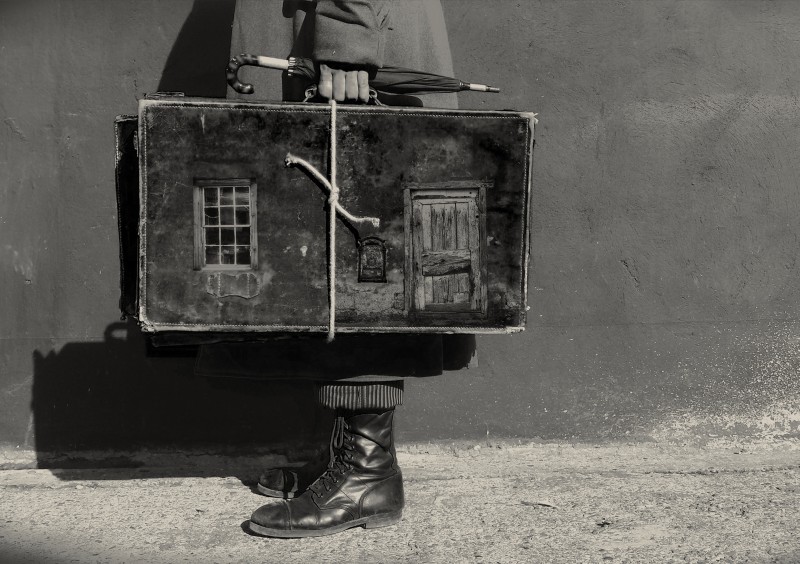 Flabbergast Theatre have grown a reputation for delivering highly skilled visual comedy. The creators of Boris and Sergey have etched out their own unique visual style in slick performances of high-energy tabletop puppetry. Tatterdemalion is their first foray into the world of clown and mime whilst still incorporating some object manipulation. Yet, in comparison to the confidence and verve of their puppetry work, their skill in this new form is very much in development.
Flabbergast Theatre have grown a reputation for delivering highly skilled visual comedy. The creators of Boris and Sergey have etched out their own unique visual style in slick performances of high-energy tabletop puppetry. Tatterdemalion is their first foray into the world of clown and mime whilst still incorporating some object manipulation. Yet, in comparison to the confidence and verve of their puppetry work, their skill in this new form is very much in development.
Set seemingly nowhere, I am as confused by the opening as our solo clown performer seems to be. Entering in a nightgown and sleep hat with a teddy bear, only to discover an audience is waiting for him. From here on, the lack of clarity of the clown’s awareness and relationship to the audience creates numerous problems in delivery and communication that lead to bemusement and ultimately frustration on my part.
Theatre clown is an incredibly complex and enigmatic form, with its own very specific mechanisms and parameters. It warrants years and even decades of exploration as its meaning and ‘reason’ is aptly as intangible as the meaning of life. So, a series of questions here might suffice to express the areas I felt demanded further attention. What do the company define as ‘clown state’? We might describe it as a sort of living, breathing, vulnerability, and openness to an audience. Yet Tatterdemalion’s clown felt masked and remote (and lacked vulnerability). What is the clown’s status in relation to the audience? If high status, the audience may laugh at the clown’s idiocy in seeing themselves thus; low status and the audience may laugh at them whilst the clown desperately tries anything to please them. Yet this clown lacks definition in status, making for a vague and shifting relationship with the audience and I squirm to try and find humour in this awkward dynamic. Where is the clown’s pleasure? In pleasing the audience or pleasing themselves? Either can be intriguing and endearing but again neither seemed clear or evident here. What impulses does the clown follow? A clown can be said to only come to life in front of an audience, living an incredibly present and impulsive existence. This is part of their unique charge. Many events and actions take place throughout this piece: clothes are changed, objects are mimed, yet the impulse, reason or pleasure to do this isn’t made clear.
Redeeming moments are found in the glimpses that we get of object manipulation: the company’s strength in this realm is powerfully evident and a magical headless shirt that presides over a pop up shop is mesmerising to watch. Yet these moments are brief and lack any seated context, perhaps adding to the confusion.
Theatre clown is a mystical and baffling form that tackles the very reasons for performance and being and it is currently experiencing a certain renaissance thanks to the popularity of performers such as Dr. Brown. It’s valid and admirable for such a successful comic troupe to be drawn to the form, but at this stage the show feels more like dipping their toes rather than making a piece that really immerses itself in the questions and principles of clown.
